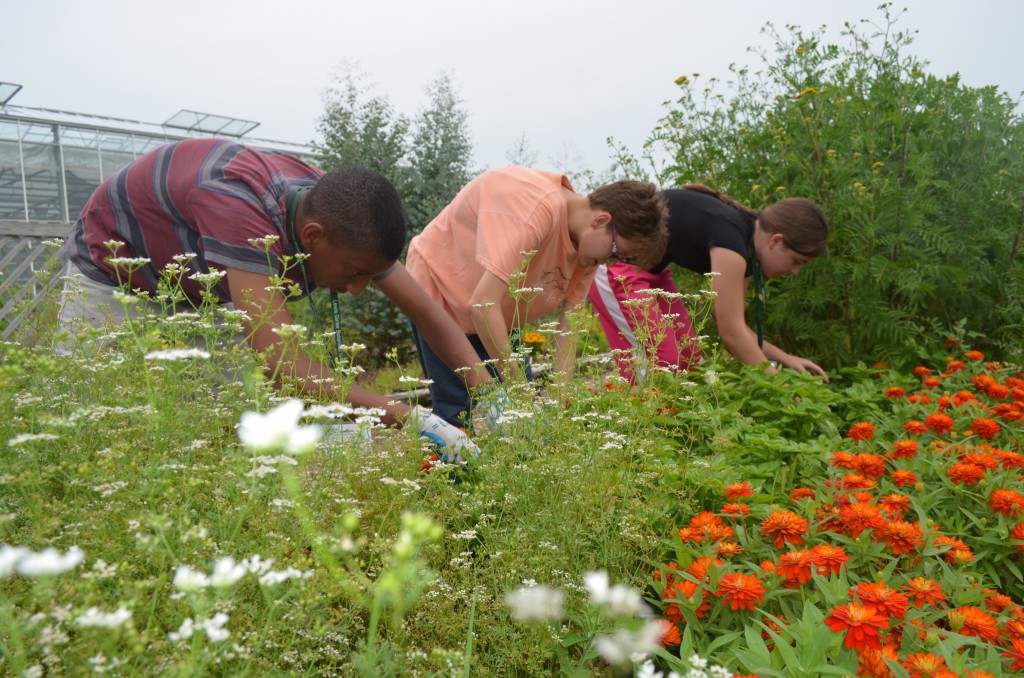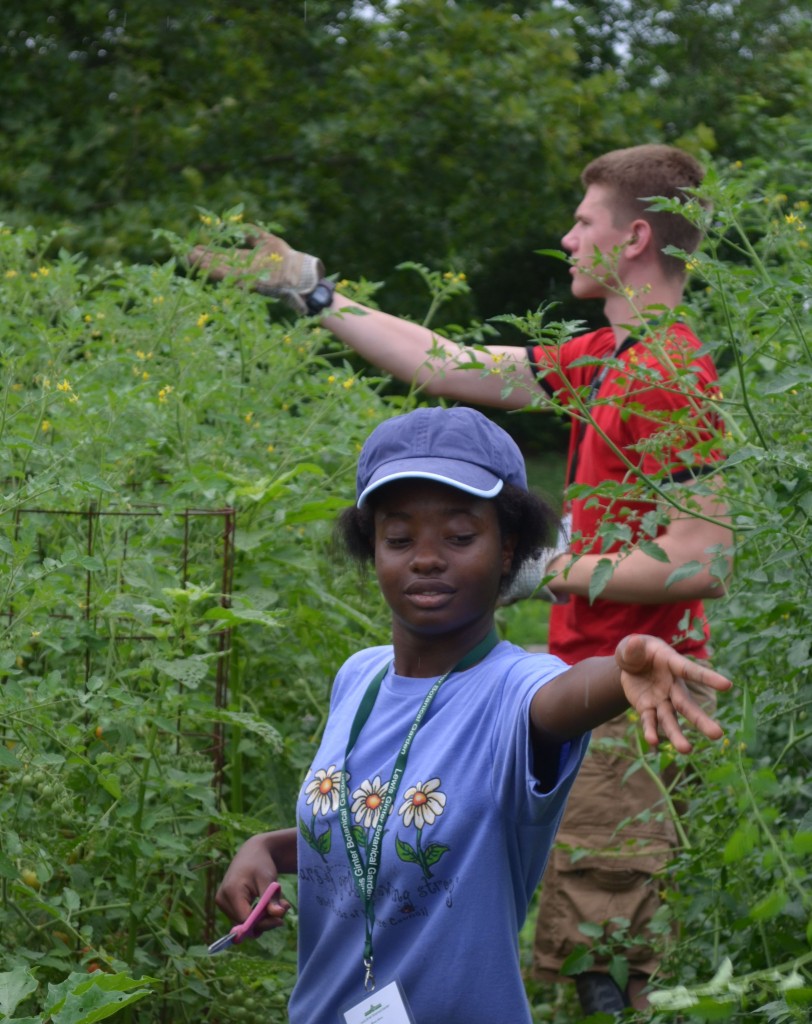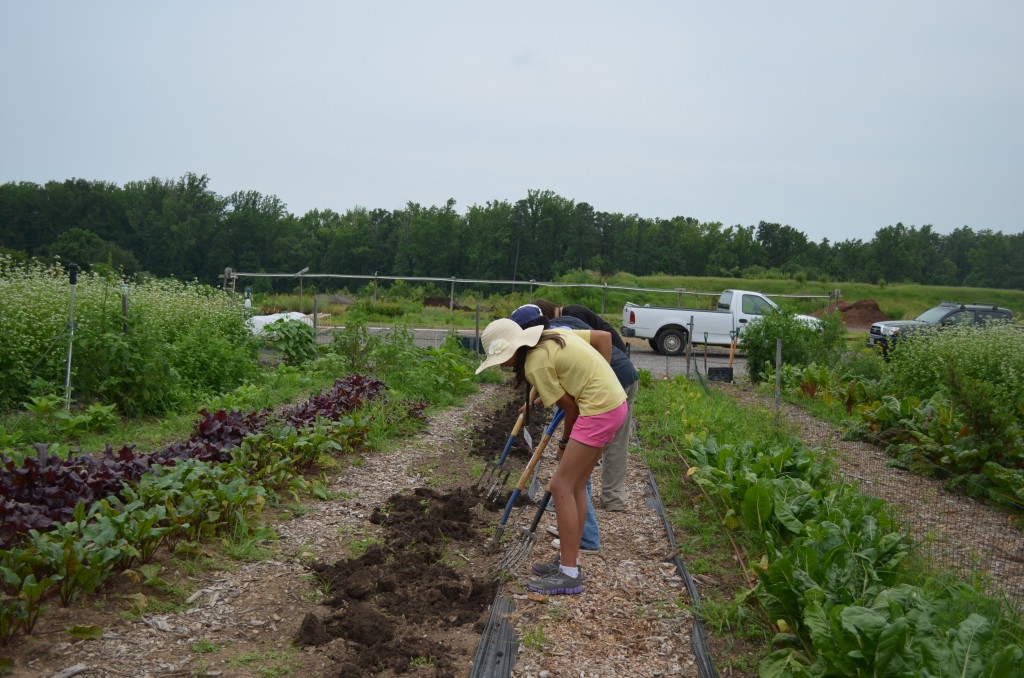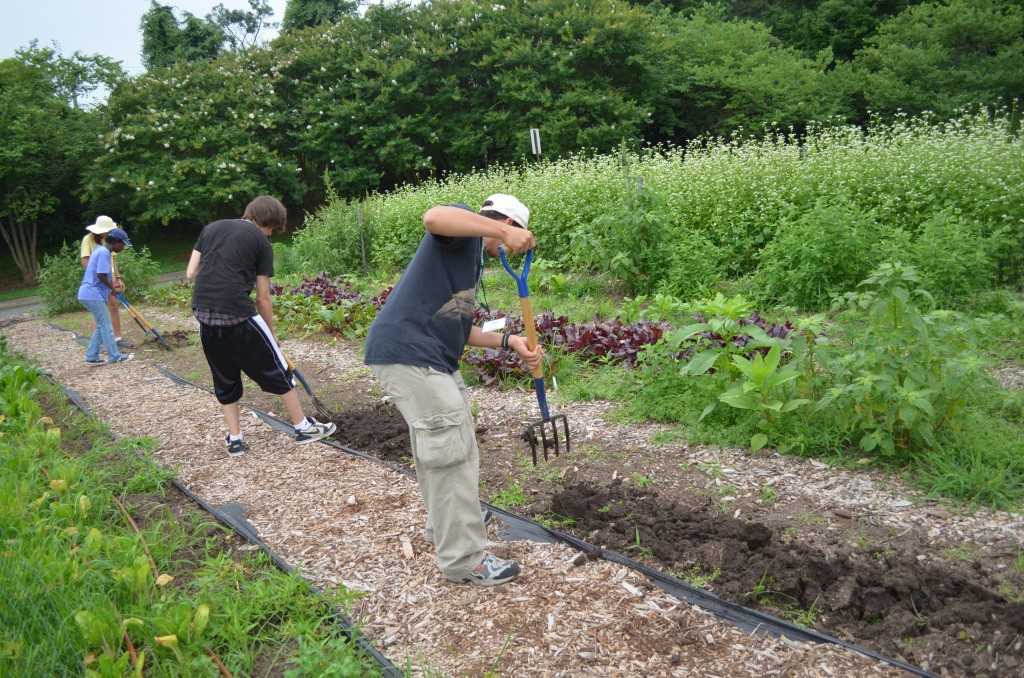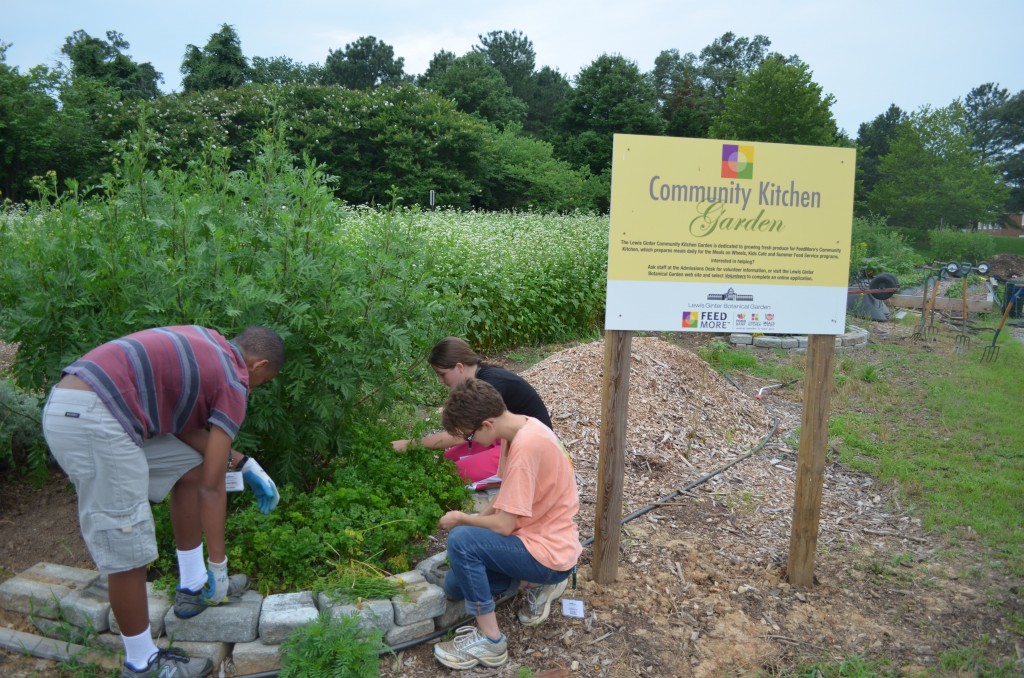Bringing People & Plants Together to Improve Communities
by Jonah Holland, PR & Marketing Coordinator, Lewis Ginter Botanical Garden
Tuesday and Thursday mornings at Lewis Ginter Botanical Garden in summer means you’ll hear the sounds of teenagers chatting between rows of Swiss chard and beets, cherry tomatoes and bell peppers. Each week, a dedicated handful of area teens leave the comforts of air conditioning or lazing by the pool, and come to the Lewis Ginter Community Kitchen Garden to learn about plants, growing vegetables, and teamwork, while doing important work that benefits the community. The teens, age 13-18, come work at the Garden despite the summer heat because they feel drawn to work in the Community Kitchen Garden — a large-scale gardening project that last year produced 12,454 lbs. of fresh, local vegetables to give to Central Virginia’s neediest citizens in 2012. Last year alone, our contribution of fresh produce helped FeedMore (serving the Central Virginia Foodbank and Meals on Wheels of Central Virginia) provide an estimated 9,580 meals for Central Virginia’s hungry children and homebound seniors. FeedMore is just down the road from the Garden, so the vegetables don’t travel more than 5 miles from where they are grown.
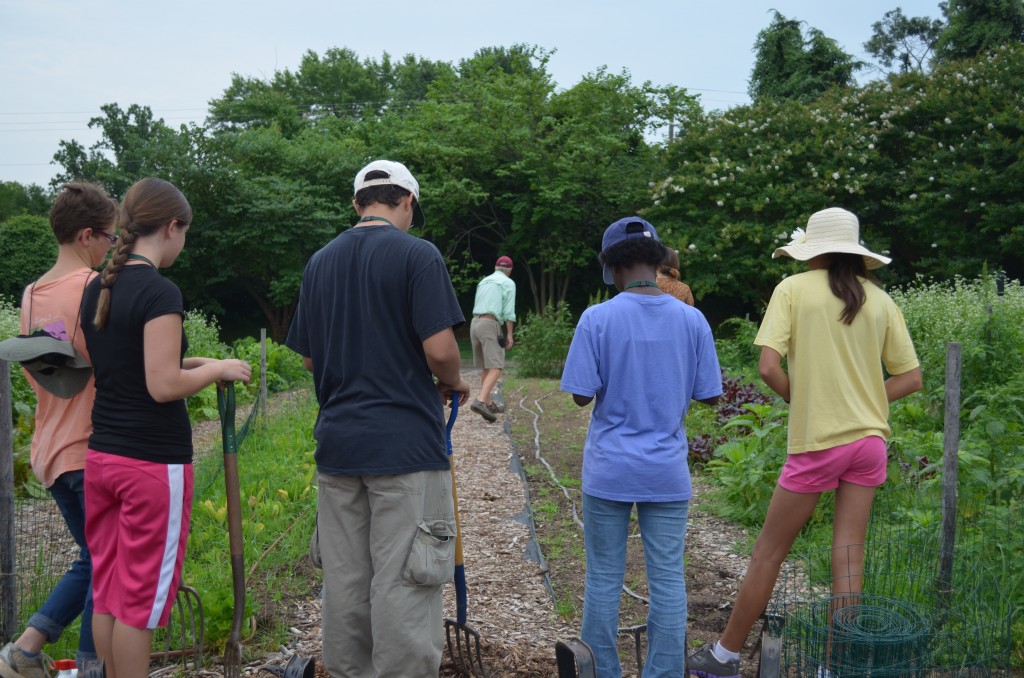
Community Kitchen Garden Coordinator, Brian Vick, instructing the Youth Service Volunteers on turning over a bed.
Here at the Garden, we know it’s important that all of our citizens have access to healthy, fresh, nutritious food, but we also know how important it is that young people connect with nature, and learn where their food comes from and how to grow it. What we’ve learned at Lewis Ginter Botanical Garden is that kids who grow their own food also want to eat it. Plus, gardening is great exercise and a fun way for kids to stay active and learn. That’s where the Community Kitchen Garden comes in, bringing these passions together! Our mission is education and our passion is bringing people and plants together to improve communities, these projects embody our mission. The young adults are part of the Youth Volunteer Program, a service learning curriculum at Lewis Ginter Botanical Garden, a Let’s Move garden.
On a Tuesday this summer, the youth volunteers worked turning over a bed to prep it for a new planting of beets, harvested basil and parsley and gave a “hair cut” to cherry tomato plants that had gone wild with growth and were over running into the paths. ”Mr. Brian” (aka Brian Vick, the Community Kitchen Garden Coordinator) explains to the kids about the why and how of each task. Why is tin foil scattered around the zucchini plants? Why is there a CD hanging from string in the garden? The kids have lots of questions, but lots of answers from Mr. Brian and Nicki, Garden educator and Youth Programs Developer, too. Then, it’s their turn to ask the kids questions. What is soil compaction? And how much water and air are in soil anyway? Each experience is deliberate and carefully thought out and planned around a curriculum.
Kelly Riley, Children’s Education Manager, explains, “Exposure to gardening is pretty significant for kids these days because there is such a disconnect from where their food actually comes from. Volunteering and giving back to the community is great. More importantly, the exposure to a world that kids don’t often get to experience has a greater impact on how youth form their ideas about their interdependence with the natural world.” Learning how food grows, and how nutrition from plants fuels our bodies with the healthy food choices we make, plus helping to ensure, though our partnership with FeedMore, that Central Virginia families have access to healthy food, is key.
“I didn’t know how to grow an edible plant myself, just flowers,” says Amy, 16. “But now I can grow plants.” At home, she grows tomatoes, basil and chocolate mint.
Daniel, 13, says after starting work in the Youth Volunteer Program his dad sensed his growing interest in plants and gave him 2 tomato plants and a green pepper plant to take care of. Eating the fruits of his own labor is a different experience he says.
“I grew it, so I have to enjoy it more. There’s a sense of accomplishment to have grown and harvested the vegetables you eat.”
In addition to the Garden’s Youth Volunteer Program, the Garden also offers opportunities for other youth volunteer learning including: vocational program and cooperative learning partnerships with several area schools, and groups that teach teens and young adults with special needs.
You can learn more about the Community Kitchen Garden, watch videos of planting and harvest, see photos, and how this project started on the Garden’s webpage.
Editor’s note: This blog post was originally posted in an abbreviated form on the Institute of Museum and Library Services blog.
